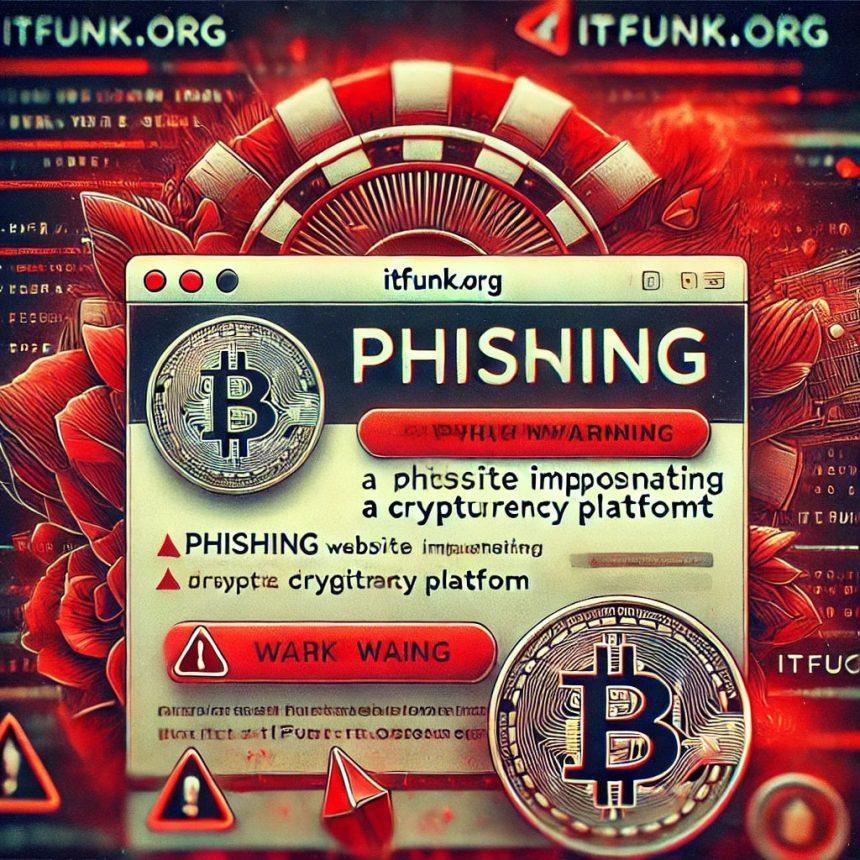The OneDrive – Encrypted EFT Document email scam is a prevalent phishing campaign designed to trick recipients into providing their login credentials by impersonating a legitimate financial document. The scammers attempt to steal sensitive personal information, such as email account login details, financial data, and other private information, by urging users to click malicious links.
Threat Summary
| Detail | Description |
|---|---|
| Name | OneDrive – Encrypted EFT Document Email Scam |
| Threat Type | Phishing, Scam, Social Engineering, Fraud |
| Associated Email Addresses | Fake email addresses (e.g., “noreply@onedrive.com”, “support@onedrive.com”, etc.), often appearing to be from legitimate companies |
| Detection Names | Phishing emails, fake OneDrive page, “EFT Document Scam”, “OneDrive Phishing” |
| Symptoms of Infection | Unauthorized access to accounts, email password changes, suspicious activity on social media, identity theft, financial loss |
| Damage | Loss of sensitive private information, stolen login credentials, identity theft, monetary loss, unauthorized access to online accounts |
| Distribution Methods | Deceptive emails, rogue pop-up ads, misspelled domains, search engine poisoning techniques |
| Danger Level | High – Users’ login credentials are stolen, allowing hackers to access sensitive personal and financial information |

Remove
OneDrive – Encrypted EFT Document Email Scam
With SpyHunter
Download SpyHunter now, and scan your computer for this and other cybersecurity threats for free!
How the OneDrive – Encrypted EFT Document Scam Works
Phishing emails like the OneDrive – Encrypted EFT Document scam often contain deceptive messages meant to create a sense of urgency, prompting recipients to act quickly. Here’s how the scam works:
- Phishing Email: The recipient receives an email claiming they have an encrypted Electronic Fund Transfer (EFT) document waiting for them. The email urges the recipient to click on a link titled “ACCESS MY FILE” to view and sign the document.
- Fake OneDrive Page: When the recipient clicks on the link, they are redirected to a fake OneDrive sign-in page that closely resembles the real OneDrive login interface. This page asks the recipient to enter their email address and password to continue.
- Credential Theft: Once the recipient enters their credentials, the scammers capture the email login details and can use them for malicious purposes. They may access the account and steal personal information, send scam emails, or even distribute malware.
- Consequences: With stolen login credentials, cybercriminals can commit fraud, access sensitive information (banking details, credit card numbers), and use the email account to spread further phishing campaigns. This can lead to identity theft, financial loss, and damage to personal or business reputations.
Recognizing the OneDrive – Encrypted EFT Document Email Scam
Here are some signs that an email might be part of the OneDrive – Encrypted EFT Document phishing scam:
- Urgent Language: The email may use urgent or alarming language, such as “Important document”, “Immediate action required”, or “Your EFT document is ready.”
- Deceptive Links: The email includes a link that appears to lead to a legitimate OneDrive page but redirects to a phishing site.
- Suspicious Email Address: The sender’s email address may look similar to a legitimate one (e.g., noreply@onedrive.com), but small discrepancies in spelling or domain can indicate a scam.
- Generic Greeting: The email might not address you by name, opting instead for a generic greeting like “Dear Customer” or “Dear User”.
- No Personal Information: The email typically doesn’t include specific details (e.g., your transaction history or account details) that would indicate it’s from a trusted source.
How to Remove the OneDrive – Encrypted EFT Document Email Scam?

Remove
OneDrive – Encrypted EFT Document Email Scam
With SpyHunter
Download SpyHunter now, and scan your computer for this and other cybersecurity threats for free!
If you have fallen victim to the OneDrive – Encrypted EFT Document scam, it’s crucial to remove any potential malware and secure your accounts. Follow this comprehensive guide to remove the scam and protect your data:
- Run a Full Malware Scan with SpyHunter
- Download and install SpyHunter.
- Launch the software and start a full system scan to check for malware or phishing-related files that may have been inadvertently downloaded during the phishing attack.
- SpyHunter will detect and remove any malicious files or components associated with the phishing scam.
- Change Your Passwords
- Immediately change the passwords for any accounts that were accessed by scammers, starting with your email account. Make sure to use strong, unique passwords.
- Consider using a password manager to securely store your credentials.
- Enable Two-Factor Authentication (2FA): For added security, enable 2FA on your email and financial accounts. This will provide an extra layer of protection, requiring both your password and a secondary verification method to access your accounts.
- Check for Suspicious Activity
- Review your email, bank accounts, social media, and any other online services for signs of unauthorized activity.
- Report any suspicious activity to the respective service providers and request further investigation if necessary.
- Use SpyHunter’s Tools to Monitor for Future Threats: SpyHunter provides real-time protection and web monitoring features that help prevent future attacks. Use these tools to stay alert for phishing emails and other online threats.
Preventive Methods to Avoid Future Phishing Scams
To prevent future phishing scams like the OneDrive – Encrypted EFT Document email from affecting you, consider adopting these best practices:
- Be Cautious of Unsolicited Emails
- Avoid clicking links or opening attachments in unsolicited emails, especially those claiming to be urgent financial documents.
- If you’re unsure about the legitimacy of an email, contact the company directly using an official contact method.
- Examine URLs Carefully
- Always verify the URL before entering sensitive information on any website. Genuine URLs typically begin with “https://” and contain the official domain name of the company (e.g., onedrive.com).
- Be wary of misspelled URLs or suspicious variations of domain names.
- Use Reliable Antivirus Software
- Use antivirus software, like SpyHunter, to scan for and block phishing threats.
- Keep your antivirus software up to date to ensure it can detect the latest threats.
- Educate Yourself and Others: Regularly educate yourself and those around you about phishing scams and how to recognize them. Knowledge is one of the best defenses against cybercrime.
- Enable Security Features on Accounts: Use strong passwords and enable two-factor authentication wherever possible. This adds an extra layer of security in case your login credentials are compromised.
By being aware of phishing threats like the OneDrive – Encrypted EFT Document email scam, you can protect yourself and your sensitive information from falling into the wrong hands. Always exercise caution when dealing with unsolicited emails, and use robust security tools to safeguard your digital life.

Remove
OneDrive – Encrypted EFT Document Email Scam
With SpyHunter
Download SpyHunter now, and scan your computer for this and other cybersecurity threats for free!





